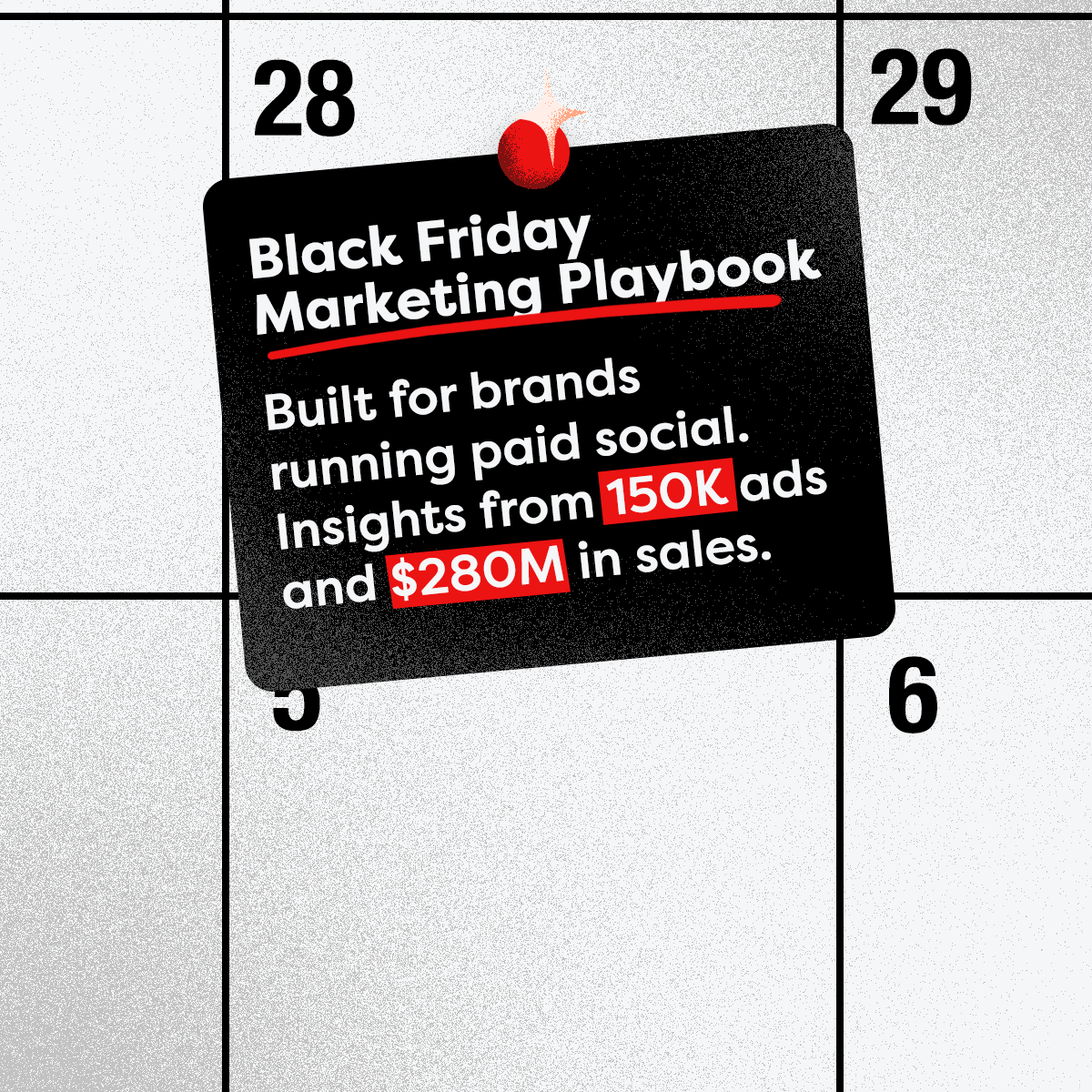Testing Ad Variations: How to Consistently Lift Campaign Performance
Passionate content and search marketer aiming to bring great products front and center. When not hunched over my keyboard, you will find me in a city running a race, cycling or simply enjoying my life with a book in hand.

Most performance gains come from better creative, not targeting tweaks. Cross channel evidence shows creative quality is the biggest driver of sales lift, which is why testing ad variations should be an always on habit.
Platform learning systems also set the tempo for testing ad variations. For example, Meta recommends optimizing to an event that fires about 50 times per week so your tests stabilize faster.
In this guide, you’ll learn a simple cadence for ad variations, how to budget experiments, design valid tests, and use automation to scale.
TL;DR
- Treat creative as the main performance lever.
- Rotate 4-6 ad variants to manage volume and fatigue.
- Reserve 10-20% of spend for experiments.
- Pause losers at roughly 3× target CPA.
- Keep tests stat valid and avoid peeking.
Why Testing Ad Variations Matters for Performance
Creative quality is a dominant driver of sales lift, so systematic testing ad variations produces outsized gains when compared with targeting tweaks. Strong measurement and platform mechanics turn creative from a guess into a repeatable growth lever.
- Cross channel evidence shows the biggest reason sales go up is the ad’s idea and execution, not targeting. Which is why continuously testing ad variations delivers strong ROI.
- Stable learning needs conversion density. Optimize to an event that occurs about 50 times per week so tests can settle.
- Use Experiments to quantify impact with holdouts or A/Bs and make decisions on lift, not vibes.
- AI enhanced creative tools have shown directional gains, including +11% CTR and +7.6% CVR vs non gen-AI baselines.
To turn wins into playbooks, pair structured tests with disciplined ad variations and lightweight refresh cycles. For fundamentals and workflow tips, see our guide to ad testing and our playbook on ad iterations.

The Cadence for Testing Ad Variations (rotate 4-6 Variants)
A lean slate keeps delivery stable and learnings clear. Keep each ad set tight, monitor creative fatigue, and refresh on a predictable rhythm so testing ad variations compounds into repeatable wins.
- Keep volume lean. Meta enforces Page level ad limits to curb instability, so avoid bloated libraries.
- Stay under six. Meta advises using 6 or fewer creatives per ad set to prevent dilution and learning resets.
- Watch fatigue weekly. Rising costs with repeated exposure are a signal to rotate in fresh ad variations.
- Practical cadence. Rotate 4-6 variants, refresh on fatigue flags, and read out weekly.
- Turn winners into playbooks. Templatize what works by concept and format.
By holding to this cadence, testing ad variations stays focused, budgets avoid dilution, and learning cycles remain fast.
Budgeting for Testing Ad Variations: Allocate 10-20% to Experiments
A protected experiment lane keeps growth moving while most spend stays on proven winners. Use platform Experiments to split traffic cleanly, avoid audience bleed and bias, and reach statistical power before making decisions.
Google’s campaign guidance includes Experiment Power indicators and tips to reach significance faster in Search and Performance Max. Set a minimum viable test length; very short runs are often inconclusive, so align duration to your buying cycle.
Key things to note:
- As a working rule, reserve 10-20% of total budget for creative experiments and keep the rest on winners.
- Apply a kill rule: pause losing variants around 3× target CPA to protect ROAS.

Prepare For Black Friday With Ease
Design Valid Tests for Testing Ad Variations
Great tests keep it simple: change just one thing, get enough conversions to reach power, and judge results by lift.
Run your A/Bs or holdouts in the platform’s own Experiment tools (Meta, Google) so splits stay clean and unbiased. Aim for an event that fires about 50 times per week to stabilize learning and attribution.
Decide success criteria before you launch: your primary KPI, the minimum detectable effect, and the power you need.
Don’t peek early, or you’ll inflate false positives – commit to a fixed window that fits your buying cycle. Watch for fatigue; if costs rise with repeated exposure, swap in fresh ad variations without breaking the test. Then document what worked and turn winners into templates for your next round.
Automated Ad Variation Generation for Testing
Automation helps you sketch concepts faster, spin up combinations at scale, and win back creative hours. Use it to quickly broaden your variants, then validate winners with experiments so testing ad variations stays disciplined.
Meta Advantage+ can enhance and personalize creatives, while Dynamic Creative mixes assets and copy to build high-performing combos automatically. Google’s text customization adds extra headlines and descriptions, and Performance Max assembles the best asset combinations across Google surfaces.
On TikTok, Symphony, Billo and Creative Assistant speed ideation and scripts. Use automated campaign insights and AI mashups to seep up the testing process. Keep governance tight too. Meta outlines labeling and transparency for AI-generated or edited ads, so keep those policies enabled and documented.

Explore how to combine human concepts with AI tools with Billo AI mashups – generating ready to use ads from your current creatives.
Measurement and Roll Up for Testing Ad Variations
Tidy measurement turns experiments into decisions you can trust. Use native Experiment surfaces for clean splits, pre define success metrics, and roll results into a simple decision tree so testing ad variations compounds over time.
Here are some of the things to keep in mind:
- Source of truth. Read results in platform tools like Meta Experiments and Google Ads Experiments to avoid audience bleed and attribution drift.
- Define the KPI set. Align on primary KPIs like CPA or ROAS and support metrics like CTR, CVR, and Reach so testing ad variations optimizes the right outcome.
- Pre set your MDE and power. Choose a minimum detectable effect and power threshold, then keep the test running until you hit them.
- Sanity checks. Ensure conversion density is sufficient so learning stabilizes before calling winners.
- Readout template. For each variant capture concept, format, spend, impressions, CTR, CVR, CPA or ROAS, and confidence. Include notes on audience or placement.
- Decision rules. Promote if the variant beats control at your confidence threshold, iterate if it is close, and pause if it is around 3× target CPA.
- Playbook the wins. Convert winners into reusable templates using our guides on ad testing and ad iterations.
With a consistent roll up, testing ad variations becomes an always on engine for creative improvement rather than a series of one off bets. Explore the creative testing roadmap to continue learning.
Summary and Next Steps
Think of creative as your main performance lever. Keep testing ad variations on a steady rhythm so small weekly learnings stack up. You are not chasing magic tricks. You are building a repeatable habit.
Keep 4-6 variants live in each ad set so delivery stays smooth and audiences do not tire out. Ring-fence 10-20% of your budget for experiments and let the rest ride on proven winners. That balance keeps growth moving without risking the whole account.
Capture what worked and turn it into a template for the next round. Over time, this simple loop turns testing ad variations into a predictable engine for lower CPA and stronger revenue. Try Billo for a seamless process.
FAQs:
How many ads should I run per ad set when testing ad variations?
Stay at 6 or fewer creatives per ad set to avoid dilution and learning resets. This aligns with Meta guidance on keeping ad volume lean to protect delivery stability.
What signals tell me it is time to refresh ad variations?
Watch for rising CPA alongside higher frequency and flattening CTR. These fatigue signals mean swap in new variants and pause underperformers while keeping the test structure intact.
How much budget should I reserve for ad variations testing?
Allocate 10-20% of total spend to experiments and keep the rest on proven winners. Use native testing tools to split traffic cleanly and reach significance before making decisions.
What is a good kill rule when testing ad variations?
A practical guardrail is to pause variants around 3× your target CPA to protect ROAS. Document the decision and move learnings into your iteration template so future tests improve faster.
How long should a test run when testing ad variations?
Run until you hit your power threshold and conversion density. As a rule of thumb, optimize to an event that occurs about 50 times per week so systems learn reliably.
Can I use automation to scale ad variations?
Yes. Tools like Meta Advantage+, Google text customization and Performance Max, TikTok Creative Assistant, and Billo to speed up variant creation, which you should then validate with experiments
SEO Lead
Passionate content and search marketer aiming to bring great products front and center. When not hunched over my keyboard, you will find me in a city running a race, cycling or simply enjoying my life with a book in hand.

Authentic creator videos, powered by real performance data
22,000+ brands use Billo to turn UGC into high-ROAS video ads.
From Guesswork to Growth: A Practical Creative T...
Ad-hoc creative testing often produces noisy results. When multiple variables [...]...
Read full articleAI‑Driven Creative Coaching: How Machine Learn...
Creative is no longer just a variable – it’s the [...]...
Read full articleFrom Brief to Breakthrough: Translating Data Ins...
Marketing performance rises and falls on creative quality, but most [...]...
Read full article



